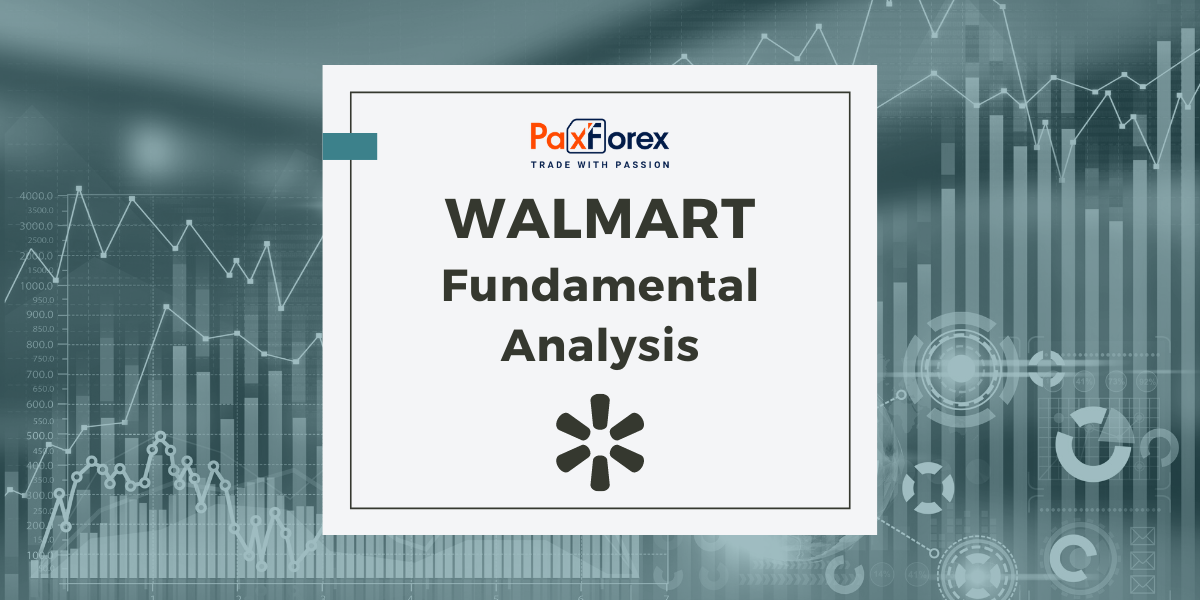
Source: PaxForex Premium Analytics Portal, Fundamental Insight
Investors tend to count on Walmart in times of economic turmoil as a retailer, known for its economies of scale and everyday low prices, has long been considered a recession-proof business. After all, more than half of the company's revenue comes from groceries, which consumers are willing to buy under any circumstances.
That may be the reason Walmart has been outperforming the market in recent months. But will this momentum continue? To answer that question, we'll look at both sides of the issue - the positives and the negatives. Let's start, perhaps, with the optimistic factors.
First of all, Walmart has made significant improvements in recent years, including adding grocery pickup points to thousands of stores, introducing Walmart+ membership subscriptions, growing its marketplace and advertising business, selling off underperforming international businesses, and improving Sam's Club.
These efforts have paid off as the company has seen steady growth in comparable sales while gaining market share and becoming a modern omnichannel retailer.
Furthermore, it is apparent that Walmart is exerting more pressure on Amazon than ever before. Amazon, the e-commerce behemoth, has recently declared that it will be elevating the minimum order amount for food delivery from $35 to $150. This essentially relinquishes the vast food delivery market to Walmart, after years of endeavoring to establish a strong presence in it. Additionally, Amazon is starting to impose charges on certain customers for returning orders to UPS stores. Both of these actions demonstrate that Amazon is departing from its traditional strategy of subsidizing losses to secure market share. This development should present an opportunity for Walmart to seize a greater market share and potentially enhance its profit margins, particularly as it ventures into domains that Amazon has historically dominated, such as the third-party e-commerce market. Although Walmart encounters the same challenges as other retailers, such as a surge in inventory and lackluster sales of discretionary items like electronics, the company has not been in a more favorable competitive position in a long time. While the current economic climate may impact its performance this year, Walmart remains poised to make significant gains in the market.
On the flip side, the bearish outlook for Walmart pertains to its need to adapt to the pandemic environment. Initially, the company fared well during the outbreak, as it was deemed an essential retailer, while several other enterprises were forced to temporarily close. Nonetheless, as the economy gradually recovers, consumers are eagerly anticipating opportunities to venture outside their homes. This rapid shift in consumer behavior may have caught Walmart off guard. As of Jan. 31, the company held $56.6 billion worth of inventory, which is significantly more than it would prefer. Adding to the predicament, Walmart's competitors are also grappling with excessive inventory levels. Why is this unfavorable for investors? To restore inventory levels to desirable thresholds, industry players need to offer discounts and promotions, which could lower profit margins. In the most recent quarter, Walmart's operating profit margin plummeted to 3.4%, down from 3.9% in the corresponding period the prior year. Moreover, there is no assurance that further discount reductions will not be required.
Finally, Walmart's stock is trading at a price-to-earnings ratio of 35, which is about the average at which it has traded in the last couple of years. Given the heightened risks associated with changing consumer behavior and oversupply in the industry, it would make more sense to buy Walmart stock at a lower price than what it is selling for today.
As long as the price is above 145.00, follow the recommendations below:
- Time frame: D1
- Recommendation: long position
- Entry point: 149.76
- Take Profit 1: 151.00
- Take Profit 2: 154.00
Alternative scenario:
If the level of 145.00 is broken-down, follow the recommendations below:
- Time frame: D1
- Recommendation: short position
- Entry point: 145.00
- Take Profit 1: 143.00
- Take Profit 2: 141.00













